Mealybugs !!!
I just found soil mealybugs. The other day while watering I found four dried carcases on top of reservoir lid, after further inspection and removing plant and going through soil - and there they were. So far only two plants of the isolated 16 which I added to collection about a month ago had them. These 16 violets have been on separate light stand and separate reservoirs.
Those of you who have had soil mealybugs what did you do to get rid of them - and did you have success?
Please all suggestions, thoughts remedies will help me decide if I should try and save them or destroy.
Thanks, Mac
Comments (22)
fred_hill
14 years agoHi,
I used a chemical called Marathon which you work into the top of your pot and water it in. I got my Marathon from Cape Cod Violetry. it's expensive but worth it. I have been told that there is a generic form of Marathon which is called Imacloprid. I have been heard that this is the same as marathon and that Marathon is just a form of Imacloprid.
Fred in NJRelated Professionals
Leawood Landscape Architects & Landscape Designers · Tempe Landscape Contractors · Beverly Hills Landscape Contractors · Dunwoody Landscape Contractors · East Hanover Landscape Contractors · Mason Landscape Contractors · Nashua Landscape Contractors · New Cassel Landscape Contractors · Nutley Landscape Contractors · Ocoee Landscape Contractors · Pahrump Landscape Contractors · Post Falls Landscape Contractors · Saint Paul Landscape Contractors · San Pedro Landscape Contractors · Raytown Landscape Contractorsminimac
Original Author14 years agoThanks Fred and Irina. I just got some Marathon yesterday.
Right now the 2 plants are in plastic bags (after being re potted in new soil) waiting to be treated. They are in wicked 3 oz. solo cups. So, do I just take a pinch of Marathon (1/8 tsp or less) sprinkle around plant on top of soil, lightly water in and let them sit in plastic bags a few days, then lightly re water again, let sit a couple more days, then put back on reservoirs? Or, after lightly watering put back on reservoirs? Or what? The rest of the collection may I just sprinkle M. on top, lightly syringe with water and put back on reservoirs?
I think this is a light infestation. How long does Marathon take before SMB are DEAD? How long do you think the two plants should be in isolation.
Now that I have Marathon, I like your idea, Irena, to treat all new plants coming in.
This is my own fault. Never - Never, did I even think before taking plants out of isolation to re pot the plants and check for SMBs down under. Never! I always inspected for problems and symptoms of infestation above the soil. I'll not make that mistake again.
Hey, thanks for all the details and information.
Mac (Dumb, Dumb, and Dumbher)
lathyrus_odoratus
14 years agoMac, I know many people do what Irina does and treat all plants coming in. It works....in the short run. The problem is that when we use chemicals when they are not needed, the bugs tend to develop resistance more quickly. Scientists suggest we ONLY use chemicals when we have proof we have a problem. It ensures that they do not have to invent a new chemical in a few years instead of in ten years. Eventually, every pathogen or pest becomes resistant to everything....it's trying to make that cycle longer instead of shorter that is important.
Same applies to us - we shouldn't ever take drugs like antibiotics for things like a cold or the flu. It just creates more problems and soon the antibiotics no longer work.
nwgatreasures
14 years agoRespectfully - I understand that the magic and benefit of this forum is that the many ideas that we can exchange can give us options when it comes to learning how to care for our plants....
I strongly disagree with the suggestion to not use chemicals as a preventative. Prevention of known pest related to AV care is paramount to those who have a collection that they've invested time, money, energy and effort into caring for. I'm not clear what the definition of 'short run' is; however, as someone who has been growing violets for over 20 years and who has used various chemicals as a preventative with good success - I don't consider that short term.
Prevention weighs an ounce....regret and treatment weighs a ton....especially when it comes to things that could have been easily prevented, are easily administered, are cost effective and have been proven to control the very thing/pest/situation that we want to prevent.
Treating one's plants with Marathon (or the active ingredient within it)is being responsible for the plants in your care (IMO&E) just as is using an anti fungicide/algicide. Plants are not people and as such, require different care (even though I recognize that there are similarities)
If it's ok that your plants (or a single plant) be a loss...or that you spend DAYS or MONTHS ridding your collection of something that could have easily been prevented - then proceed accordingly without prevention treatments.
That isn't acceptable to me and so I treat my plants with Marathon (formerly used Dysiston), an appropriate solution of Phyton 27, and I treat the water with an appropriate solution of Physan 20 and recommended doses of fertilizer.@ Mac - there's no dumb, dumb and dumber.....only people who who value exchange and learning. That does seem to be you :) I'm enjoying your post and watching your learning journey.
And to anyone seeking a source for more information regarding this topic:
Allow me to recommend one of the best (if not THE best) resources for this topic.
INSECTS, PESTS AND DISEASES OF THE ARICAN VIOLT FAMILY by Nancy Robitaille.This book should be a standard in your collection because of its thoroughness to the subjects contained therein. I believe that you can get your own copy through eBay. I ordered mine directly from the author and use it as a reference personally and as the President of our local club several times a month. It's entirely worth the investment and it's author is a well-known authority on the subject.
Dora
Here is a link that might be useful: Insects, Pest and Diseases of the African Violet Family by Nancy Robitaille
bspofford
14 years agoWell said, Dora. And, there is no experience like a LOT of experience, and I think we ALL have an obligation to be sure of our information, and be sure it is based on experience and the knowledge gained from that experience, not just an opinion.
Opinions, well that's a whole different ballgame. Everyone's got one, etc.
Get yourself some Marathon or go to the local garden center and buy some malathion and judiciously slay the little beasts!
According to Nancy of the aforementioned book, a drench using 1 teaspoon of malathion to one gallon of warm water will need to be applied at about seven day intervals several times and will kill all phases of the insect.
Marathon is clay granules impregnated with imacloprid (sp?)and works on a time-release basis, so the residual effect should also kill all phases. Also recommended in the book.
I too repot and isolate all new plants and incorporate the use of Marathon. If there are any 'passengers' of the SMB variety, they will be killed before they spread. If there are no passengers, there is nothing there that has an opportunity to develop a resistance.
Barbara
bspofford
14 years agoCorrect spelling is imidacloprid. I have seen one pesticide at the garden center that has it, I don't remember which one, so check the ingredients.
Barbara
irina_co
14 years agoAha = imidacloprid - and it is systemic - so it stays active for 3 months - so no pests left in this pot - no eggs. Takes care of the fungus gnats during these 3 months too. And much less poisonous for humans and pets than disyston and malathion. Plus it doesn't stink. Plus the phytotoxicity is miniscule in comparison with malathion. I lost 1/3 of the AV crowns by treating woth Malathion.
But - if somebody has allergies or asthma...any pesticide should be out of question.
I.
lathyrus_odoratus
14 years agoFood for thought. It's a major AV hybridizer and grower who told me about not using chemicals when there is nothing suspect. He mentioned how difficult it is to get people to stop doing it because we're all so afraid if our collections. But, after doing it himself and then reviewing the science, he felt the science was on the side of not using them when they are not indicated.
In terms of a collection, that is why we isolate. You prevent something from attacking your entire collection.
Another hybridizer and grower I talked to said she isolated EVERY plant and leaf in a baggie. Many of us would never do that. But it's how she ensures that nothing hurts her. My point is that there are more ways than using pesticides to solve problems....and prevent them.
bspofford
14 years ago"My point is that there are more ways than using pesticides to solve problems....and prevent them."
l/o, in your experience, how would you solve the problem of existing soil mealy bugs without using pesticide? If you recall, minimac stated he HAS them, and inquired how to get rid of them.
trailer_gal
14 years agoJust curious. What is the percent of imidacloprid in the Marathon? I have the Bonide systemic houseplant insect control that has imidacloprid at 22%. Wonder if Marathon is a lot higher. I had purchased this for control of aphids in my impatiens. It lists mealy bugs as one of the insects controlled.
irina_co
14 years agoMarathon is 1% (ONE PERCENT) active ingredient. I guess the granules are made in a way that they are very slow releasing. Imidacloprid has its own LD50 number - means how much of it you need to ingest per 1 kilogram of your weight to have 50% chance of dying - and since I am not petite - it amounts for me up to 4 pounds of Marathon granules. It is a synthetic tobacco poison. Many years ago my Granny was buying cheap loose tobacco, boiling it, adding lye soap - and using it to dip the tips of the plants infested with aphids - roses etc. Since then - the everpresent tobacco mosaic virus makes this practice unsafe.
In any case - Chris Rose - a very talented British streptocarpus hybridizer - is a die hard no chemicals grower. Couple years ago he was pleading for anybody to give him a natural recipe to fight off the mealies - because they were destroying his hybridizing material and results. And he couldn't compromise and use the chemicals even if it would cost him many years of work not too.
I do not know the end of the story - but I have 1 of his hybrids.
So - it is everybody's personal call. We just need to respect it and leave it alone.
Irina
trailer_gal
14 years agoThe reason I asked is that I have been dealing with systemics off and on for a few years. I quit using what I had a few years back because it smelled so bad and made me feel kind of funny. It was Acme 2% systemic granules, contains DiSyston. Active ingredient Disulfoton 0.0-diethylS-2-(eihylthio)ethyl)phosphorodithioate 2%. This year I had such a problem with aphids on my impatiens I brought in that I used the rest of it and again didn't feel good. It smelled really terrible, too. It did say it could be used on house plants. Then I bought this Bonide Systemic Houseplant and it doesn't have the strong odor and have treated most of my plants with it that are in my cellar.
Yesterday, as I was repotting my african violets after several treatments with Avid for broadmites I noticed on their necks the white substance of what might have been mealy bug. I am constantly fighting them on my oleander so it is very possible that they had them besides the mites along with the broad mites. Am thinking of using this Bonide on my african violets just as others are using the Marathon. Wondering if it would be as effective.
Thanks for any advice.minimac
Original Author14 years agoSo I treated my mealies with the Marathon. Being a newbie I was frightened of using chemicals and in the beginning I was going to avoid them at all cost. I had dubbed myself the "Neem Queen", but Neem wasn't going to help with this. I remember (think it was Irina) in a past post a while back had said that at some point in our growing experience that we will get bugs -they will come.
When I dumped that pot and raked through the soil and found those mealies - my heart sank. I thought I had been so careful. Most of my collection at this time is minis and semis and I re pot every 3 or so months and it was time. If they were all standards perhaps it would have been quite a while before I would have re potted and found them. Mealies are hard to see in all that perlite. My mealies had no webbing (that I noticed) and the roots were still good. It was a fluke I even noticed those little carcases and they very much resembled flakes of vermiculite.
Treating them wasn't bad at all. I turned the fan off, had a mask, wore gloves.lol Marathon, like the instructions say is very water soluble. After sprinkling I syringed water on top and it just melted down into the soil. Easy.
I understand the theory and in the beginning was going to follow, but after so much time invested and once your collection (becomes much larger than you ever anticipated) the thought of cutting crowns, re potting 200 plus plants all at the same time...or throwing plants out and taking leaf cuttings again? I've seen plants that have had an infestation of mealies and also beautiful crowns of flowers. Sometimes you just can't tell if you have them until it's too late. Lathy, your hybridizer is right - how to get growers from using chemicals when there may not be a need, but here lies the problem - peace of mind.
How did I get mealies? Who Knows. Gees, my other plants might have already had them. These 16 plants came from a wonderful vendor. Will I order from them again? - Yes.
{{gwi:378136}}
dragonfly2008
14 years agoJust to clarify - the Bonide product is 0.22% imidacloprid (Marathon is 1.0%) (as Irina said) :)
trailer_gal
14 years agoThank, dragonfly, for clarifying that. I now see the .22%.
I read on an Avid site that Avid also kills mealy bugs so maybe it already did the job. What I saw on the necks was large area and it had kind of a gooy/gummy feel to it. It reminded of how my oleander gets when I don't keep the mealy bugs in control. Actually the violets should be good now. They look very good. Did notice that they had a very poor root system. Guess that could be caused by the mealy or the broad mite.lathyrus_odoratus
14 years ago"l/o, in your experience, how would you solve the problem of existing soil mealy bugs without using pesticide? If you recall, minimac stated he HAS them, and inquired how to get rid of them."
Barbara, maybe I wasn't clear, but I think the thread is. The original context was solving an existing problem, absolutely. But, someone then mentioned treating all things when they came in to prevent problems like this. I wasn't suggesting not to take care of things that already exist, lol! Just responding to the suggestion that we should treat everything regardless of whether a problem exists.
bspofford
14 years agoI think of using Marathon as a prophylactic measure the same as getting vaccinated for polio or smallpox, either of which I would hate to have to treat if contracted.
In my experience, those pests and diseases that are easily treated and eradicated, such as fungas gnats or powdery mildew, are not worth the trouble of prophylactic treatment other than good culture practices. In my experience, it's the potentially devastating pests that warrant some degree of prevention. I therefore 'vaccinate' my plants with Marathon.
Barbara
lathyrus_odoratus
14 years agoAnd, you certainly can do that, Barbara. I didn't tell anyone, absolutely do not do this! I suggested that other people in the community and in the science community think it's a bad thing to do and that we should consider it. That's it. I think I would have had a better response if I suggested we all walk around naked in a snowstorm!
As someone said upthread - we all have our own ideas. And we all have our own personalities. The best groups, to me, are ones where diversity is a delight.
In another thread, Dora mentioned that the atmosphere was (I can't remember the word she used, but she tried to be polite). If I sounded like I was telling anyone an absolute, please accept my apology. I won't, however, apologize for thinking differently than some people do or for sharing my perspective. I'd hope that we'd all extend that courtesy to each other at all times. And still be happy to be here, even if we don't always agree.
trailer_gal
14 years agoAfter reading your last post this morning, lathyrus odoratus, I looked back at the posts about the mites that I had a page back. You were so helpful in helping me find a direction to go with them. They were a very overwelming problem. That was when you had talked to an expert greenhouse person and he had said to not overdo chemicals. You also showed me other places to look for information.
You didn't say, "don't use chemicals".
I thank you and all the members for helping me get the problem under control.
It seems that with posting sometimes what we mean to say gets misconstrued. Maybe it is because the posts get to be so short. I, on the other hand, get too wordy sometimes. my husband can attest to that.
Thumbs up to all and keep up the good work.irina_co
14 years agoWe are lucky!!!
What we have in our group - is a very respectful and tolerant way of discussing things. Everybody has his own way of dealing with problems and is ready to share a piece of wisdom with the community.
It all depends - if you have allergy issues, pets and young kids, if you have 20 plants or 1500 plants, if you have time and means to deal with the problem in a certain way...
The main thing - we are here, we help - and no bugs can beat it ;-)).
Irina
lathyrus_odoratus
14 years agoTraler_gal, I am SOOOO happy you have a wonderful outcome with your mites. It sounds like the treatment with the Avid and (can't remember the other one you used) worked a charm. To have saved several of your varieties must feel great.
I'm glad I was able to help in some small way.
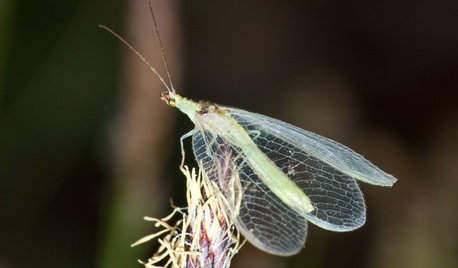




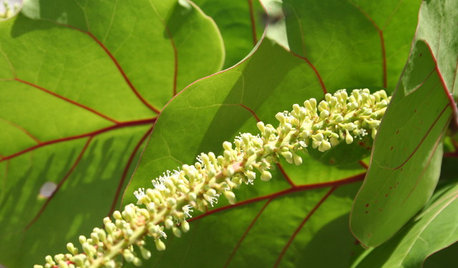
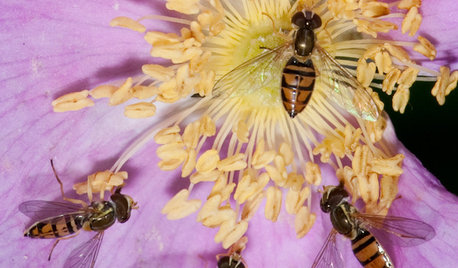
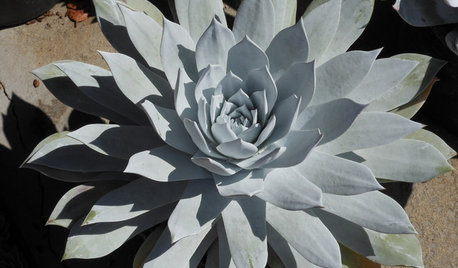







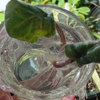
irina_co